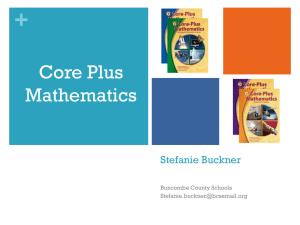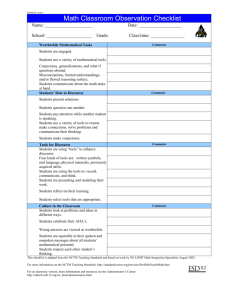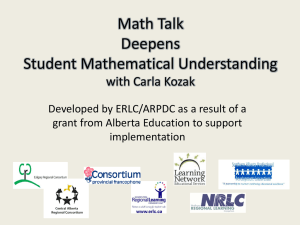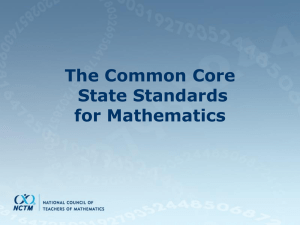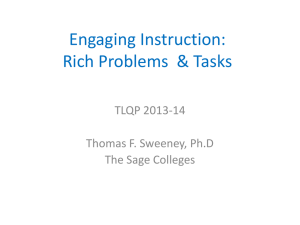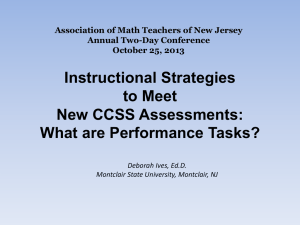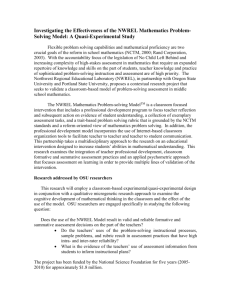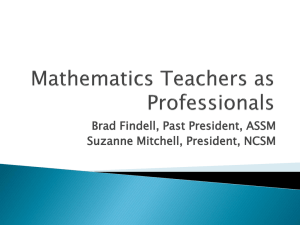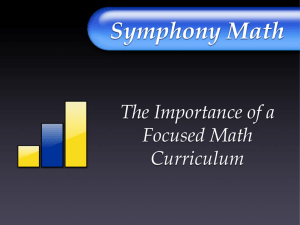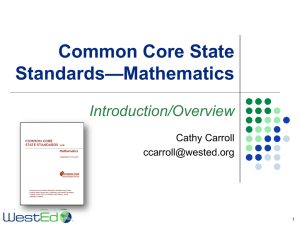Core Math Tools PowerPoint - Kansas City Regional Mathematics
advertisement
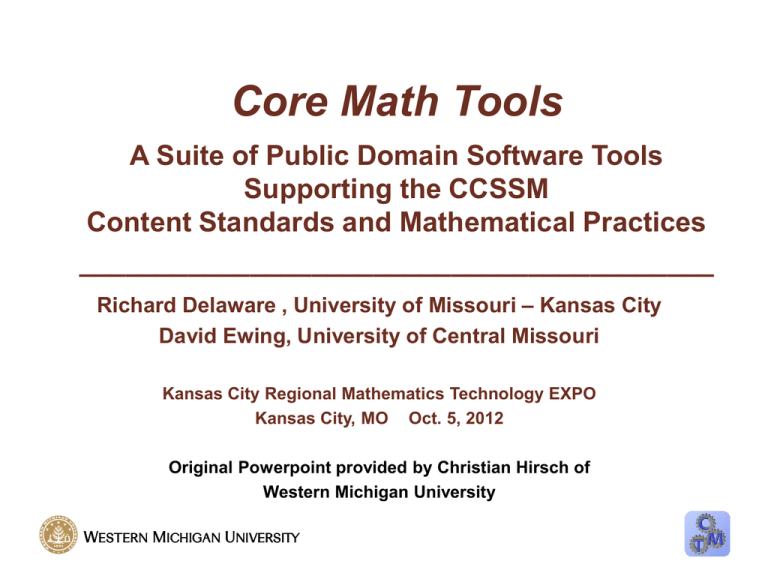
Core Math Tools A Suite of Public Domain Software Tools Supporting the CCSSM Content Standards and Mathematical Practices _________________________________________ Richard Delaware , University of Missouri – Kansas City David Ewing, University of Central Missouri Kansas City Regional Mathematics Technology EXPO Kansas City, MO Oct. 5, 2012 Original Powerpoint provided by Christian Hirsch of Western Michigan University NCTM Core Tools Task Force Christian Hirsch, Chair Western Michigan University Henry Kepner (Emeritus) University of Wisconsin-Milwaukee Fred Dillon Strongsville High School, Strongsville, Ohio Gary Martin Auburn University Patrick Hopfensperger University of Wisconsin-Milwaukee Rose Mary Zbiek Pennsylvania State University Brin Keller Michigan State University David Barnes NCTM Liaison Genesis of Core Math Tools In spite of the considerable promise that computer technology provides for the improvement of school mathematics and student learning, the fulfillment of that promise has been stymied by issues of finance, access, and equity, among others. Heid 1997, 2005 Reports from the Field • Core-Plus Mathematics Users’ Survey • MAA Curriculum Foundations Project • Common Core State Standards Initiative Common Core State Standards for Mathematics Mathematical Practice: Use appropriate tools strategically. Mathematically proficient students consider the available tools when solving a mathematical problem. These tools might include pencil and paper, concrete models, a ruler, a protractor, a calculator, a spreadsheet, a computer algebra system, a statistical package, or dynamic geometry software. Proficient students are sufficiently familiar with tools appropriate for their grade or course to make sound decisions about when each of these tools might be helpful. . . . Common Core State Standards for Mathematics 2010, p. 7 Translating the CCSSM into practice will require “meaningful curriculum organizations that are problem-based, informed by international models, connected, consistent, coherent, and focused on both content and mathematical practices. These new models should exploit the capabilities of emerging digital technologies … with due attention to equity.” Confrey & Krupa A Summary Report from the Conference “Curriculum Design, Development, and Implementation in an Era of Common Core State Standards,” 2010 Access and Equity • 95% of youth aged 14–17 are online • 92% of families have a computer at home • 93% of teens use a desktop or laptop • 76% report having high-speed Internet access Parent-Teen Cell Phone Survey, September 2009 Pew Internet & American Life Project Algebra tools include an electronic spreadsheet and a computer algebra system (CAS) that produces tables and graphs of functions, manipulates algebraic expressions, and solves equations and inequalities; and custom apps supporting mathematical modeling. Geometry tools include an interactive drawing tool for constructing, measuring, manipulating, and transforming geometric figures, a simple objectoriented programming language for creating animation effects, and custom apps for exploring geometric models of contextual situations, physical mechanisms, tessellations, and special shapes. Statistics tools include tools for graphic display and analysis of univariate and bivariate data, simulation of probabilistic situations and mathematical modeling of quantitative relationships. Spreadsheets allow easy insert of class data or data available from other sources. CMT includes pre-loaded data sets for developing key statistical ideas. MODELING AND STRATEGIC CMT USE Optimal Refinery Location Drilling teams from oil companies search around the world for new sites to place oil wells. Increasingly, oil reserves are being discovered in offshore waters. The Gulf Oil Company has drilled two high-capacity wells in the Gulf of Mexico about 5 km and 9 km from shore. The company wants to build a refinery to pipe oil from the two wells to a single new refinery on shore. Assume the 20 km of shoreline is nearly straight. What are important considerations in locating the refinery? Well #2 Well #1 9 km 5 km A 20 km Shoreline What is your best estimate for the location of the refinery? How did you decide on that location? B (CE)2+(ED')2=(CD')2=596 So CD'=24.41 • Core Math Tools is FREELY available at www.nctm.org/coremathtools • Core Math Tools is accompanied by user support and resources at the NCTM website. • Core Math Tools is designed for use with any CCSSM-oriented high school textbook series.

